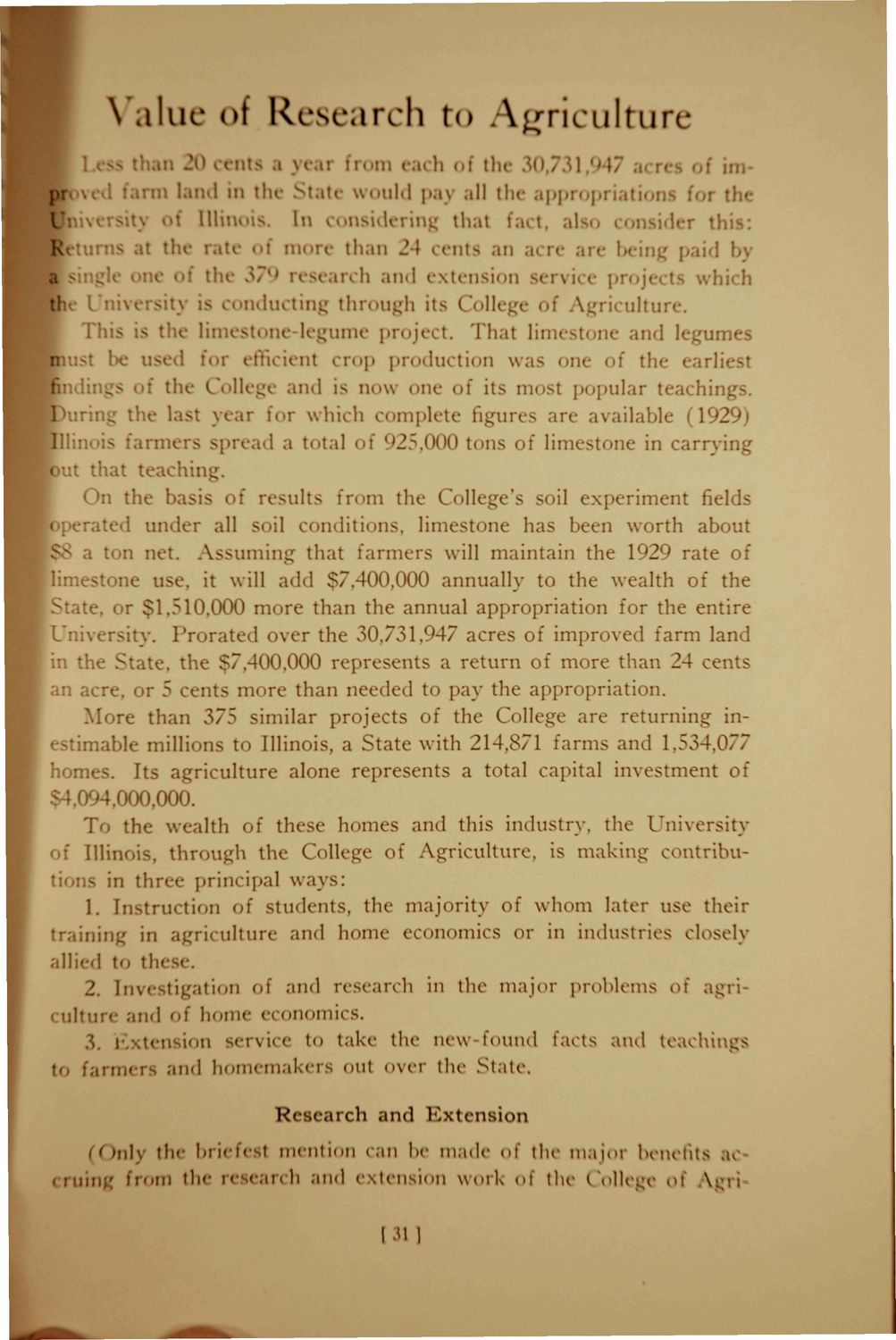Caption: Booklet - One Hundred Million (Impact of UI) (1931)
This is a reduced-resolution page image for fast online browsing.

EXTRACTED TEXT FROM PAGE:
Value of Research to Agriculture ! ess • an 2 ents a \ n h the- M '>\ rt i: arm I i in the State would p til tin ;>j r the I ( Win In -iisidni! thai i • r thii K the- tte of i than 24 tnts an ing p i I gle one oi the !i and ^tension en proj< which l*niv< j is tin throu Ii its Cell riculture. This is tl one-legume pr t. That linn and 1 fumes n 1 us< I for el nt crop pi duction \\ - one f the earliest • the ( -IImd is now one of its m i popular t hings. < Turin the last year i which < mplete figures ar< available (1929 Illin s irmers spn 1 a total of 925,000 tons of limestone in carrying • that t< hi ... On the basis of results from the College's soil experiment field •ei ted ui r all soil inditions, limestone has been worth about $ a ton net. Assuming that farmers will maintain the 1929 rate o lime one use, it will add $7,400,000 annually to the wealth of the Si tte, or $1,510,000 more than the annual appropriation for the entire Univei . Prorata 1 over the 30.731.947 acres of improved farm land in the State, the '.400.000 represents a return of more than 24 cent an ac: . or 5 cents more than needed to pay the appropr ition. More than 375 similar projects of the Colic e are returning inestimable millions to Illinois, a State with 214,S71 farms and 1.554.077 horn* . Its agriculture alone represents a total capital investment of 0,000. To the wealth of these homes and this industry, the University ' [llinoi through the College of Agriculture, is making contributions in three principal ways: 1. I n s t r u c t i o n of s t u d e n t s , t h e m a j o r i t y oi w h o m later use t h e i r riiu in a g r i c u l t u n and h o m e e c o n o m i c s or in i n d u s t r i e s cl • ly 11; I tO th< ••. In* ligation of and research in the major problems of agriculture and of home i onomics. 3. ) tension service tO t a k e the new found f a m n S a n d h o m e m a l • is out o v e r the S t a t e . Research and Extension facts a n d teachings (Only tie briefest mention can be made of the major benefits cruii from the M-•• irch and i tension work of the rolle-e o\ \o,-j [31 I
|